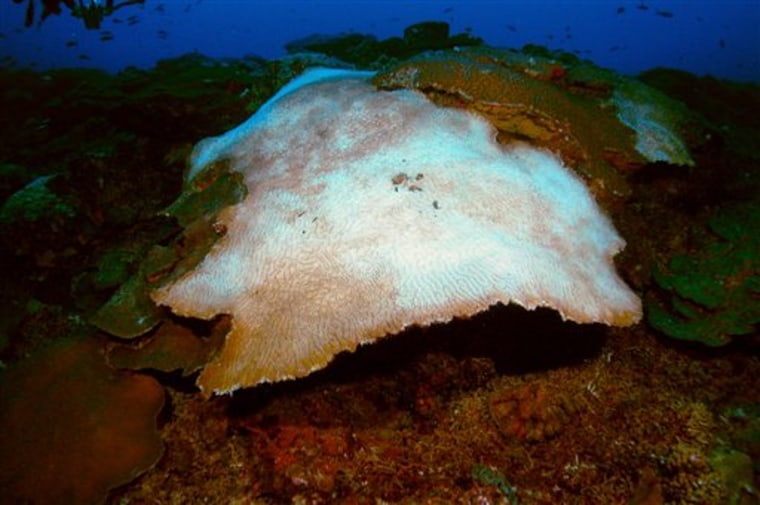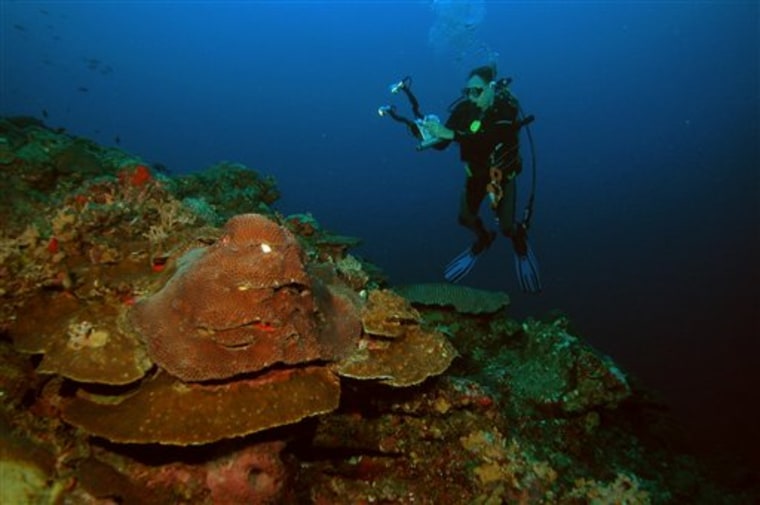Hurricane Rita’s pounding waves and a hotter-than-usual Gulf of Mexico took a toll on the Gulf of Mexico’s only government-protected coral reefs about 100 miles off the Louisiana and Texas coasts.
Besides hardcore divers and offshore oil workers, few people see the multicolored reefs, manta rays, lobsters, sharks and fish of all stripes that dart in and out of Flower Garden Banks National Marine Sanctuary.
But it is an important feature in the Gulf. Loggerhead sea turtles call it home, for example, and it is one of the few places in the world where hammerhead sharks school.
The reefs, which began to form up to 15,000 years ago, are the northernmost coral reefs in the United States and gained sanctuary status in 1992. Roughly 2,500 divers visit them each year.
‘Fish live is all around’
“It’s one of the healthiest places where we can dive close to home,” said Frank Wasson, who runs dive tours to the remote sanctuary. “When you get down there, it’s boulder coral. It’s very much the same in every direction, but the fish life is all around you. The fish are poking their faces over your shoulder.”
Surveys of the 40-plus-square-mile sanctuary found that about 5 percent of it was damaged by Rita’s waves, said G.P. Schmahl, the National Oceanic and Atmospheric Administration’s sanctuary manager.
Brain and star coral, the most common types of coral in the sanctuary, were toppled and smashed by waves, Schmahl said. Also, the reefs’ sand flats, where queen conch and trigger fish nest, were disturbed by the pounding waves, he said.
Runoff and warmer waters
Besides Rita’s waves, a mass of turbid water from towns and industries was washed offshore by Rita’s deluge and stressed the coral reefs, Schmahl said.
But Rita wasn’t the only source of stress last summer for the reefs.

Last year, Gulf waters around the reefs were slightly hotter than normal — 89 degrees rather than the average 86 — and that caused “bleaching” for about two months, Schmahl said.
Bleaching is caused by the release of algae that live symbiotically within the cells of the reefs and can kill coral. The bleaching, which makes coral look white, was widespread and worrisome, but authorities said not much coral has died from it so far.
“At this point, it could either heal itself or get worse and lead to mortality,” said John Embesi, an artificial reefs specialist with the Texas Parks and Wildlife Department.
Global warming tie?
David Helvarg, president of Washington, D.C.-based ocean advocacy group Blue Frontier Campaign, believes the bleaching was caused by global warming.
“Clearly one of the big impacts that’s being ignored from global warming is the impact to the oceans,” Helvarg said. “We’re already in the footprint of climate change, and we should be addressing it as a major global crisis.”
The sanctuary does not encompass all reefs in the northern Gulf of Mexico. Little known reefs are found up and down the ridge of the continental shelf, and some marine activists want to designate those reefs as sanctuaries also.
